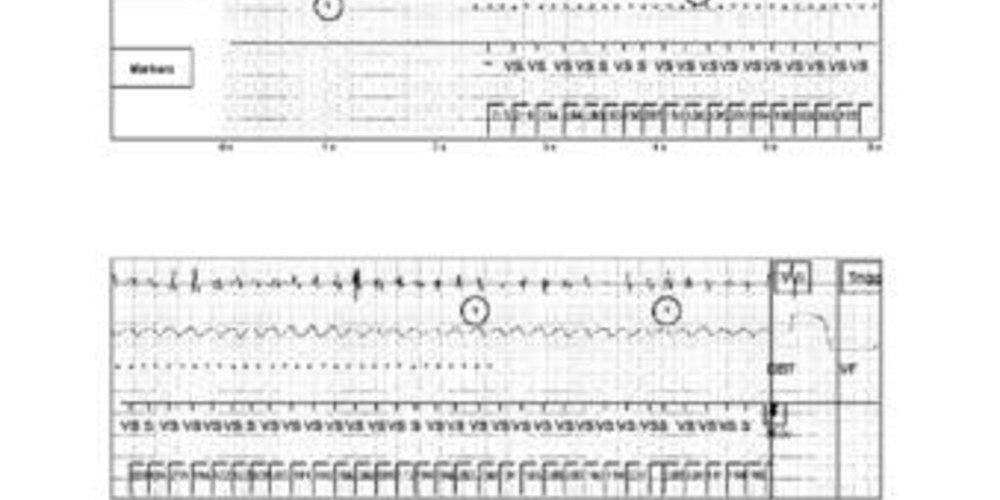Induction of ventricular fibrillation under local anaesthesia
Tracing
Manufacturer Abbott
Device ICD
Field Implantation
N° 7
Patient
A 65-year-old man suffering from severe ischemic cardiomyopathy and an episode of sustained VT received an Ellipse VR ICD. In absence of anaesthetist, the device implantation was performed under local anaesthesia.

Graph and trace
- VF induction by 30-Hz alternating current;
- Induction of VF and onset of the capacitors charge; the ventricular EGMs were correctly sensed in the VF zone. However, since no zone of therapy was programmed, they were marked VS;
- End of the capacitors charge;
- 2-sec delay between the end of the charge and the shock, corresponding to the delay preceding the patient’s loss of consciousness;
- 30-J shock delivered by the operator after the loss of consciousness.
Other articles that may be of interest to you







The implantation of an ICD usually includes the induction of VF to verify that the device accurately detects and terminates the tachyarrhythmia. This procedure is generally performed under general anaesthesia. This tracing shows a procedure performed under local anaesthesia, when it is preferable to induce a ventricular tachyarrhythmia with a painless 30 Hz pacing burst, which is better tolerated in the conscious state than a T wave shock or DC. The reliability of sensing can be validated by the analysis of markers during the VF episode. The shock must be delivered only after the patient has lost consciousness. It is customary to instruct the patient to count and, when the voice has faded, to deliver the shock. This procedure has the advantage of exposing the patient to an actual ventricular tachyarrhythmia, including the acceleration of the heart rate, followed by a more or less sudden loss of consciousness and an automatic electrical shock. The approximately 9-sec delay between the arrhythmia onset and loss of consciousness in this case, might also help perfect the programming of the number of cycles needed, the amplitude of the first shock and the charge time to promote the loss of consciousness or, instead, to hasten the shock delivery with a view to prevent it.